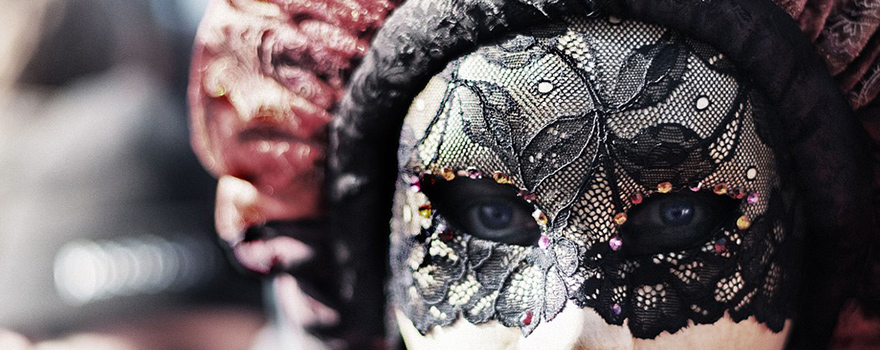Time to say Goodbye to Old Man Winter and to Welcome the Goddess of Spring. Here are the Top Five Ways to celebrate Farsang in Hungary.
January 6, the last day of Christmas, is the beginning of Hungary’s very own winter carnival, called Farsang.
Celebrate Farsang in Hungary #1 Masquerade Balls
During this festival, there are masquerade balls, lots of interesting (and very fattening) food and drink and, of course, lots of noise. In addition, the southern Hungarian town of Mohács is the scene of the annual “Busójárás, which has to be experienced to be believed.” Christian and pagan rituals intertwine during Farsang, which lasts until the start of Lent (Ash Wednesday, which is March 1 in 2017). But Farsang in Hungary also says so long to Old Man Winter and welcomes in Spring.
January 6 is also the traditional day for taking down Christmas trees. This winter period also sees a spike in the number of winter weddings, due to the lessening of farm work and the ease of preparing and storing food for the many guests.
Even more about the Hungarian Carnival Season: Farsang Fun – Carnival Season in Hungary, GOODBYE WINTER, HELLO SPRING

Celebrate Farsang in Hungary #2 Farsang Farka (or “the tail of Farsang)
The best part of Farsang is the final three days, called Farsang Farka (or “the tail of Farsang). In 2017, this period is February 26-28.
These festivities during this time are by tradition the last explosion of crazy fun before Easter. On the last day, straw scarecrows will be burned to send winter back into its cave for another year. For the more traditional celebrants, the Lent period is an opportunity to fast and to prepare for spring and the even bigger and better Easter celebrations.

Celebrate Farsang in Hungary #3 Torkos Csütörtök (“Fat Thursday”)
In addition to the masquerade balls and the many other Farsang parties, Budapestians will also celebrate Torkos Csütörtök (“Fat Thursday”). This holiday is held on the Thursday after Ash Wednesday. During this period, celebrants can eat, drink and be merry at one of more than 300 Budapest restaurants offering a 50% discount. In 2017 it’s on March 2 and it is the final day to indulge your taste buds before fasting begins. The event brings alive an old folk tradition of feasting to get rid of the leftovers from carnival season (farsang). This initiative by the Hungarian Tourism Office lasts only one day, but the good news is that there is no set menu and the 50% discount, valid for lunch and dinner, applies to your final bill including food and both alcoholic and non-alcoholic drinks. This year it’s not centrally organized so just contact your favourite restaurant.

The event is getting more popular every year, so be sure to make reservations. Here is just a sample of the restaurants may be involved:
Bagolyvár
First Strudel House of Pest
Firkász Café Restaurant
Kacsa Restaurant
Kárpátia Restaurant
Nobu Budapest
Peppers!
Remíz Café and Pub
Ristorante Krizia
For those aficionados in the city, the Mangalitsa Festival, held on Szabadság tér from February 10-12, 2017, is the place to go. Other Hungarian cities also celebrate with special events.
Celebrate Farsang in Hungary #4 The famous Busójárás: Feb 23-28, 2017
Perhaps the largest Farsang event in Hungary is held in the southern city of Mohács: the Busójárás, or “Busó-walking”. Even UNESCO categorizes this event as an Intangible Cultural Heritage. But it’s quite a strange day for outsiders. Men and boys in scary wooden masks, complete with big teeth and horns and dressed in furry sheep skins, run around shouting incoherently chasing women and playfully teasing them.

Mohács comes alive with a wide variety of food and craft stalls. There’s also live music, dancing and traditional parades, but be aware that, if you’re a woman, you’re likely to be chased and scared – in a playful way, of course – by the scary “Busók.” But this playfulness is a large part of why this festival is so colorful and memorable.
A major part of this festival, a scene already filled with pagan rituals, takes place on Shrove Tuesday night, when a large bonfire in the main square is lit and the Farsang coffin is burned. One theory is that Busójárás is meant to scare away Old Man Winter, but another theory is that the event actually represents scaring away the Turks who had invaded Hungary.
Celebrate Farsang in Hungary #5 Traditional Farsang food
In preparation for the traditional Lent fasting period, it’s typical to eat a lot of cabbage and pork, but the most famous Farsang food has to be the Szalagos Farsangi Fánk, or “Carnival Doughnuts”. Dripping with fat and sugar, they’ll push your New Year’s Diet Resolution back at least a month.

And then there is: Krampampuli, or the Drink of the devil!
Krampampuli is an alcoholic drink for the winter that has been popular in the Hungarian middle class since the reform era (1825-1848). It was consumed at cafés and at home during celebrations, especially during the carnival season. This drink, which is also called the “drink of the devil”, is prepared from a special pálinka. There has to be a grate placed over the drink, onto which sugar soaked in rum is placed. The rum is set on fire and the melted sugar drips into the alcohol. In addition, special seasonings (cinnamon and clove) as well as dried fruits (sultanas, raisins, figs, dates and orange peels) are added. There are also some recipes in which this very sweet, seasoned alcoholic beverage is mixed with boiled wine, tea, lemon and orange juice.
Mór Jókai, a famous Hungarian writer of the reform era mentions this drink in his work: “It was coming to midnight. Time for a krámpámpuli. Preparing this is the duty of the host. A big tin bowl filled with grape-pálinka is usually set in front of him, and all guests also receive their tin chalices. The pálinka is then set afire and the host throws yellow sugar, figs and raisins into the blue and green flames by the handful; as a result, red flames would skip amongst the blue ones.”
This devilish mixture – when it’s burning at its highest – is given out with a big soup-dipper, hot and flaming.




